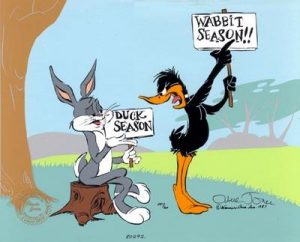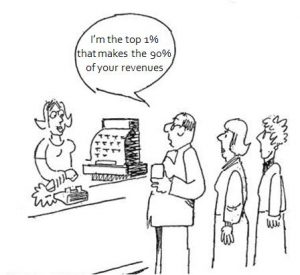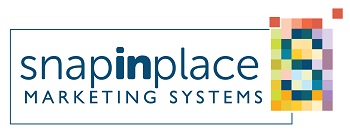There is no hunting like the hunting of man, and those who have hunted armed men long enough and liked it, never care for anything else thereafter.
— Ernest Hemingway
How well do your customers recognize your business amidst the cacophony of messages crying out for their attention in the market?
 In advancing economies there is always excess noise in the market. Customers labor to filter it out.
In advancing economies there is always excess noise in the market. Customers labor to filter it out.
In declining economies customers turn hard of hearing. Your marketing effectiveness lies accordingly in penetrating through this barrier in good times and in bad.
A compelling offer prompts the customer to take action now. You want a transaction. You want it profitable.
But to achieve this rapidly and at the lowest possible cost you must strike at the bulls eye like a sniper and not a shotgun-totting duck hunter.
You must focus on a particularly felt need from a precise target audience and, if you discover that this audience doesn’t care about your proposed benefit, then it means that you really have no benefit to offer. That is to say, you have the wrong target audience. Your offer is only adding to the clatter.
Henceforth, you must switch audiences rapidly and make up for lost time before hunting season is over.
So Is It Duck Or Wabbit Season?
A huge portion of your marketing success is rooted in a clear definition of your target audience. How do you produce this definition?
It depends on the type of business you are. If you already have customers, then the effort is slightly easier than if you’re just starting out as a new venture, for the common approach to defining a target audience is to base your decisions about customer needs upon your analysis of your existing customer base.
For an existing business this means that you will seek for prospects who are just like your current customers, preferably like your best current customers.
Who are the customers that generate 80% of your revenue? Define them in the most precise manner, using demographics, psychographics and behavioral criteria. Then look for new clients just like them.
It’s very likely that, if your existing customers are pleased with your services, then this similar audience will also be attracted to your offers, especially if you use your present customers as references.
What If I Don’t Have Any Customers Yet?
 So now you know, ONE, a sound rule of thumb to follow when looking for a prospects target.
So now you know, ONE, a sound rule of thumb to follow when looking for a prospects target.
Just make sure you know your existing customers exceptionally well beforehand, to use them as references to attract their “twins” for you.
But what if you are a start-up or your new product launch aims at a whole new type of customer? You can’t rely then on your existing customer base.
However, what you can do is, TWO, define your new target audience according to behavior.
Target Audience Body Language
For decades classical marketing has insisted on the use of demographics to define groups of people to target for promotional purposes. Why? The obvious assumption behind this practice is that members of the same population segment share common characteristics.
Group people by age, gender, income, ethnicity and you can rely on valid generalizations to reach them with some impact.
But society has fragmented ruthlessly for the last 40 years with globalization leading to more complexity and uncertainty when relying on sweeping statements about populations.
In other words, demographics alone don’t cut it any more.
One fundamental element of demographics remains valid, nonetheless.
The underlying principle in a demographic is that it is based on a lasting attribute that in fact intimately connects members of a group. The attribute you want to seize ontowhen defining a new target audience is behavior.
When studying a target market you might find various segments that will constitute target audiences. Members of these audiences may cut across traditional demographic lines. They might belong to different ethnicities, income brackets or age groups.
But if they share a behavior, then you have the makings of a community — a solid market segment — that will likely listen as a single body to your message. The more ingrained this behavior is, the more lasting and reliable the demographic becomes. This is important to keep in mind because over time behavior evolves.
There is no costlier factor in marketing than continuously delivering a message to an oblivious audience. So it is crucial that the group of people that you target be held together by a strong bond of shared behavior. This is the key demographic.
Why is such a demographic reliable? In seeking for a common objective people form groups, partnering in a dance of social cooperation. They divide the burden of labor to achieve said objective. Then they dismiss each other once that goal is achieved or if failure is eminent. Their collaborative behavior is dependable until that point, and until that point you can rely on it.
By finding enough people engaged in the same pursuit and by proposing to them to help their behavior become more effective in reaching their goal, you’re not only defining your target audience and also setting your aim for the bull’s eye, but you’re reducing the likelihood of a costly misfire. In short, you’re improving your chances of reaching a profitable audience.
 Try to make a contribution to that audience. Draw them in by becoming a part of them. After all, camouflage is not for the hunted.
Try to make a contribution to that audience. Draw them in by becoming a part of them. After all, camouflage is not for the hunted.
I call it “behavior clustering” or “hunting by the watering hole.”
It involves analyzing the body language of each member of this community that might find your offers worthwhile, then taking aim and firing off with a well-reasoned proposal.
In other words, identifying a new target audience requires observation of audience behavior down to the moment you deliver the offer.
But timing is crucial. As behavior evolves so should your marketing message and its frequency of delivery to this audience.
Go Hunting Early. Take The Right Gear With You.
Target audiences are moving targets when behavior is their unifying feature, which is why using a customer database and a carefully thought out operations methodology today is more critical than ever before.
Behavioral targeting as such is in its infancy but making great strides. It’s making in-roads in the online advertising space and interactive media, where technology has made it more feasible to track some very particular type of customer behaviors online, e.g. click-thrus, downloads, forward-to-friend, blog comments, etc. Inferring motive by data mining and polling of members in these social networks will require techniques in reading digital body language.
But for purposes of creating target audiences just to get moving on a new business or product, you may not need all this heavy artillery for starters. Just follow the next steps:
- Just try your bow and arrow, by focusing on the significance of the impact that your product is meant to have on some noteworthy behavior.
- Then seek for people heavily prone to that behavior, and call them your target audience.
- Personalize your treatment of them.
- Finally test your offer on them.
Then test it again, because even a well-defined target will change in time.
Return to Campaign Management from Target Audience And Profit
